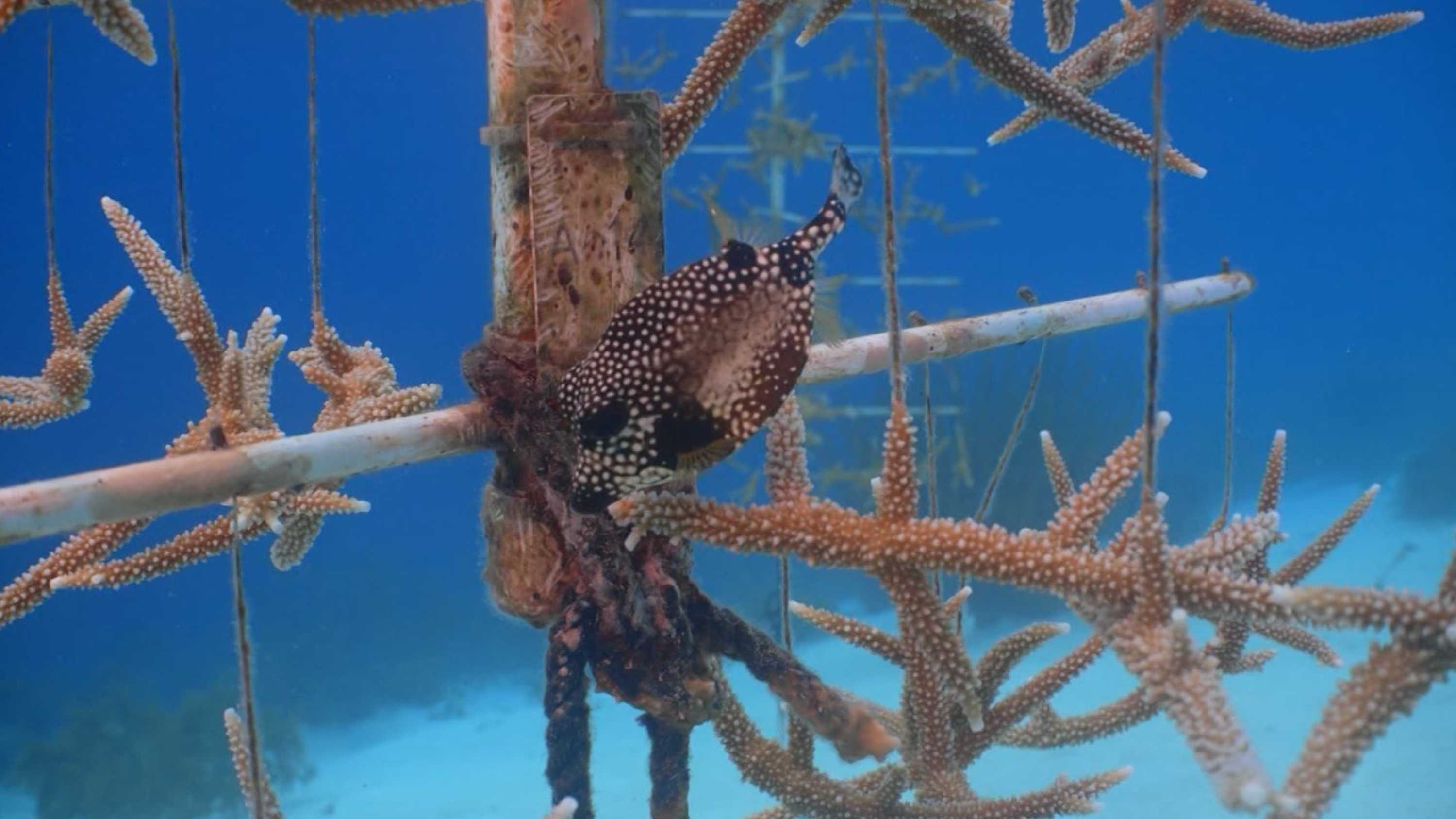(CNN Spanish) – A nursery in the depths of the Caribbean: This is Reef Renewable Bonaire’s commitment to multiplying coral reefs that are home to more than 350 species of fish on the Dutch island of Bonaire, near the coast of Venezuela.
For the past 10 years, this local organization has implemented a natural coral reef restoration operation in the southern Caribbean Sea called Fragmentation. “We raise thousands and thousands of corals in our nursery. We cut them like gardening in water. For example, let’s say we have a coral and call it the parent colony. You cut off a part and this sliver is capable,” Francesca Verdes, COO of Reef Renewable Bonaire, told CNN. The new corals will be clones of the parent colony.” With this procedure, he says, they have succeeded in producing and cultivating nearly 10,000 corals annually on the island’s reefs.
Most restorations focus on two sub-reef species: Elkhorn and Staghorn, both of which are critically endangered and important refuges for marine life on the reef. “When the project started, we collected samples from nearly 50 of these species,” Virdis says. “We need to find corals that are more resistant. They are more resilient.”
The underwater nursery on Bonaire produces around 10,000 corals annually. (Credit: CNN)
Corals, victims of climate change
Working to conserve these corals is key: A recent study, which took place over a four-year period and ended in 2020, found 61% bleaching of corals, a phenomenon that reveals signs of potentially fatal stress on these organisms.
Behind this phenomenon is climate change.
“One of the effects of climate change is, of course, warming of the oceans. What we’ve seen on Bonaire over the past few years is a lot of bleaching, but luckily not a lot of corals died. But of course,” explains Roxane-Liana Francisca, of STINARA Bonaire. , to CNN, that if these severe cases of bleaching continue and the corals don’t have time to recover, the appearance of the corals changes completely.”
(On Australia’s Great Barrier Reef, for example, there have been six mass bleaching events, four from 2016 to date, as previously reported by CNN.)
The Caribbean island enjoys decades of protection that has allowed progress in its care. In 1979, the waters around the island were given special protection, making it one of the first marine reserves on the planet. Since then, the reserve’s fishing ban, as well as mooring bans and coral removal have been regularly monitored by the Stanhope a Park Foundation.
One of the tasks they do there is to measure the water temperature, which could help, according to the biologist, “in the future if the plan is to, in a targeted way, restore coral species that survive better at certain temperatures.”
Coral reefs are one of the many victims of climate change. (Credit: CNN)
Results-based optimism
“Seeing corals that have grown since they were young fragments and that I have cared for for a few years, first in the nursery and then planted and monitored for years… is very comforting. It means that what we do makes the difference,” Virdis says of his experience with Bonaire.
Today, the island’s coral reefs maintain their position as some of the healthiest in the Caribbean. And the professionals who work there are optimistic about the future, Francisca says: “We need to decide what we want our future to look like, and then we need to take steps to make sure we can protect that future. I think we’re at the point where we can make those decisions.” which will ensure that in 20 years Bonaire will be one of the few places that holds up so well with beautiful coral reefs.”

“Music buff. Social media lover. Web specialist. Analyst. Organizer. Travel trailblazer.”

:quality(85)/cloudfront-us-east-1.images.arcpublishing.com/infobae/TEQF6EONZRFGLLLDIDD4L2O4EE.jpg)

:quality(75)/cloudfront-us-east-1.images.arcpublishing.com/elcomercio/XU32LRAEZFDDPNVHLFU3CKVBYY.jpg)



More Stories
Sheinbaum, Galvez, Mainz campaign wrap-up, news and more
Sheinbaum and Mainz’s CDMX campaign wraps up: Road Alternatives and Street Closures
Ortega attacks Humberto Ortega and declares him a “traitor to the country”